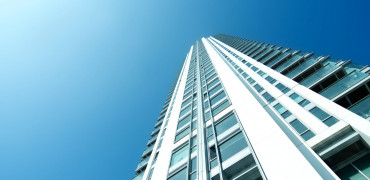As we all hurtle toward our ambitious but necessary net zero targets, sustainability across all sectors is surely top of the agenda.
A few years ago, Chancellor Rishi Sunak pledged to commit £3 billion to retrofitting schools, hospitals and privately owned homes as a way to make our buildings more energy efficient.
Under the new the new boiler upgrade scheme, homeowners in the UK can now claim vouchers of up to £5000 to be spent on energy saving improvements such as installation of insulation, double glazed windows, and air source heat pumps, or £6,000 for a ground source heat pump.
Retrofit is the process of improving both the energy and environmental performance of a building using technical interventions. The prime focus of a retrofit is to reduce heat loss through our building's fabrics, to cut heating costs and reduce our CO2 emissions.
The aim is to not only build better but also make existing homes greener.
The Future Homes Standard is due to come into effect 2025 and will provide a change in the way new homes are built with carbon emissions in mind.
That’s great for new homes and makes them fit for a low carbon future but what about the performance of our existing housing stock?
The question is whether we will harness new technologies in time?
A big, big challenge
Retrofit is possibly one of the biggest challenges the UK will have to face if the Net zero target is to be met, as has been written about on the The Hub before.
Retrofitting domestic homes will involve a variety of measures. Replacing appliances with more modern efficient models, replacing gas boilers with heat pumps and even on-site energy generation and subsequently storage.
To reduce pollution at a rate that we require we need to rapidly make homes more energy efficient and green.
Retrofitting homes with insulation and installing low carbon heating systems does come with a cost and of course changing anything in an existing property can also be disruptive.
We will need to rely further on any emerging technologies and innovations to make the targets possible. Robots, drones and prefabrication are all going to be key.
Send in the robots
Q-Bot is a small underfloor insulation robot. It can get into cramped spaces to scan and create a 3D map of your home to then spray insulation where required.
Many families would not welcome the traditional method of insulating a home and the disruption that goes in hand.
Q-Bots have already performed thousands of installations in the UK and the company behind them claim to have reduced average home emissions by 700KG per year.
Another emerging technology to note is thermal imaging, in order to map where a home is leaking heat and retrofit accordingly.
Companies such as IRT Surveys are already employing drones to assess roofs and hard to reach areas.
Prefab insulation
Prefabrication could also be the way forward. Wrap around installation can be made off site thus reducing costs and disruption.
The facades and roof panels can be fitted to existing homes easily and effectively.
Digital Twins technology is a realistic virtual representation of a home or physical object.
It serves as a digital counterpart. By linking the digital twin to a detailed record of a building it is possible to estimate retrofit costs accurately and create a positive plan of improvements for your home.
It will allow augmented reality to show pipework behind walls, forecast energy usage and provide heat information to prevent a home from going cold.
Looking ahead to the future and the ‘retrofit revolution’ the potential for these new technologies is endless, the question is will we harness them to cut our emissions and will we do it in time?
Kirsty Hammond Editor of Specifier Review




